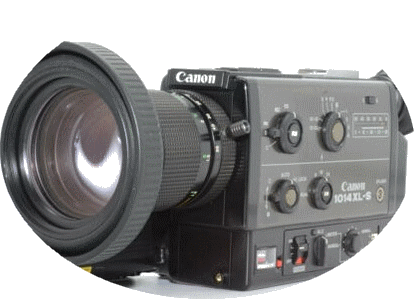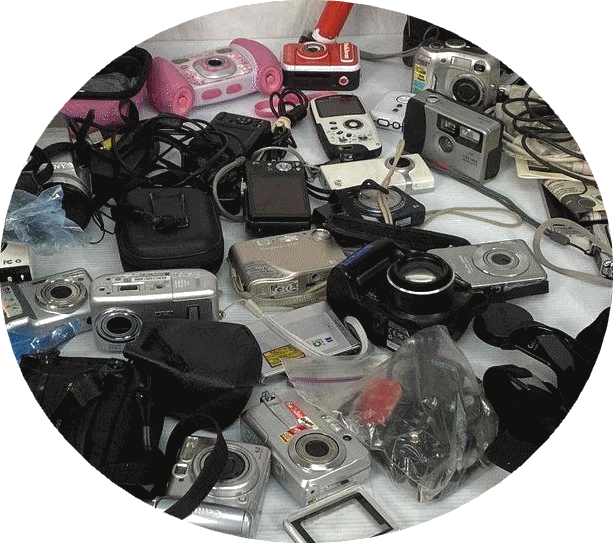Some people compare the switch from film to filmless digital cameras like the switch from movie film to videotape. Correct, but there's more.
Also you could shoot longer videos than with movie film. And with the video camera, you watched what you had videotaped on the TV set right away. Quality was pretty bad, but most people were just happy to have something that could collect their memories and didn't cost them a fortune to process.
As I mentioned earlier, when the digital still cameras first hit the market a lot of details about their use was conveniently left out by the marketing people. Specifically, all the new things you had to learn, and that in order to view pictures you had to buy a computer and learn how to use it.
But most non-enthusiastic photographers - snapshooters - we're raised on the Kodak Instamatic and the pitch that "you press the button and we do the rest." As a technical point you should understand that the quality of color negative film in the 90's was so good that it was possible to grossly over or under expose pictures using a cheap camera and the people processing the film and making prints could correct for the errors. As I've said before, things get really good just before they go obsolete.
Now consumers discovered, in exchange for saving money on processing, you push the button and you do every thing else. No nice little sleeves of negatives and glossy prints.
They were also responsible for saving pictures to a computer and finding them again, for correcting color or cropping and doing all the things that make pictures look better.
To do this, you needed a computer and a basic understanding of computer file management. Only then could you to open up the photo file and make the changes you wanted. This was not what the snapshooter had been promised.
I spent several years teaching weekly classes on how to use digital cameras, and even one monster class requiring assistants on not only using the cameras, but getting the pictures into the computers and do basic editing. Some people did not know how to put the batteries into the camera and even less about computers.
It became completely clear to me that most people really didn't want this. They wanted the ease of an Instamatic with far better results and almost no cost. This is now called "magical thinking."
In a bad move, cameras became increasingly complicated with aperture priority, shutter priority programmed exposure, manual exposure, so-called "scenes" and other adjustments that the common snapshooter had never experienced in their photographic lives. Many people spent very good money for a decent cameras with all these features and never took the dial off "decision free."
Camera makers seemed oblivious to this. Instead of making a simple camera with one or two buttons they kept adding more features. It was like the old sales rule that if you give the customer too many products to choose from, then never decide what to buy.
Far too late they added an additional feature that would turn off all the other features. Some called it the "easy mode," others the "green mode."
About the only company understood the average snapshooter was Kodak with simple, colorful menus and limited options. But their cameras never really caught on because Kodak wasn't the brand the pros were using.








